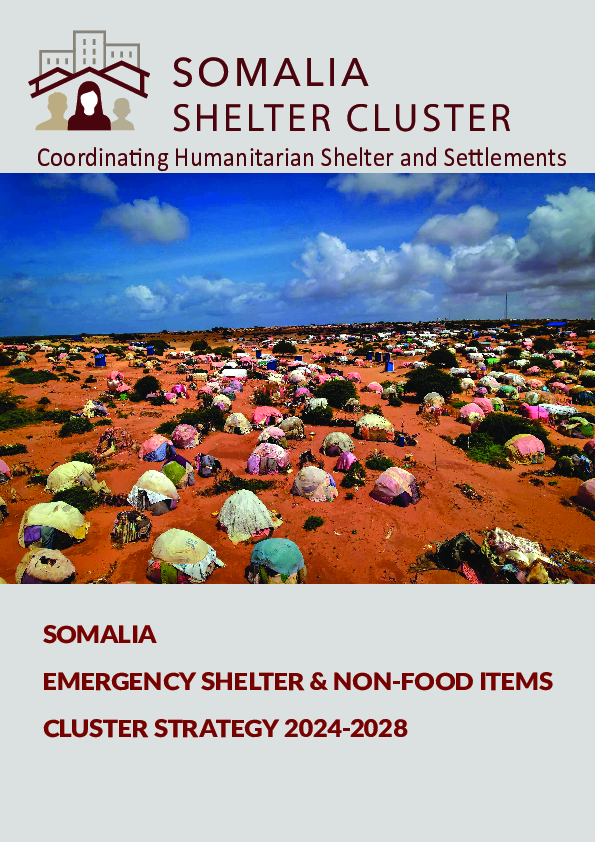Somalia
Featured Documents
Overview
Objectives of Shelter Cluster Somalia
Somalia has endured over three decades of protracted displacement, resulting in persistent and escalating demand for shelter and non-food items (NFIs). The situation continues to deteriorate due to recurrent conflict, climate shocks, forced evictions, and prolonged displacement, further compounded by a significant decline in shelter funding. Currently, 88% of internally displaced persons (IDPs) live in Buuls—improvised emergency shelters with domed thatched roofs, traditionally assembled by Somali women using twigs and fabric. This starkly reflects the country’s overwhelming shelter gap.
According to the 2025 Humanitarian Needs and Response Plan (HNRP), an estimated 4.1 million people in Somalia will require shelter assistance. However, only 1.3 million are projected to receive targeted support, leaving a substantial portion of the affected population without aid.
The inadequate living conditions in these makeshift shelters disproportionately affect the most vulnerable groups, including women, children, the elderly, and persons with disabilities, many of whom have endured repeated displacements over the years. These communities remain exposed to serious safety, security, and protection risks, including a heightened threat of gender-based violence. The combined impacts of substandard shelter, climate change, and recurrent natural disasters render these temporary solutions ineffective in ensuring dignity, safety, and resilience for Somalia’s displaced populations.
Priorities:
In 2025, the Shelter/NFI Cluster is dedicated to enhancing its response in the following key areas:
- Address the growing need for safe and dignified shelters while enhancing overall living conditions.
- Advocate for the capacity to respond to both lifesaving needs and longer-term solutions effectively, focusing on providing dignified shelter.
- Building the capacity of partners in key technical and thematic areas, including dignified shelter, coordination, and environmental sustainability.
Response Overview
In the first quarter of 2025, Shelter Cluster partners provided shelter assistance to 61,924 individuals (9,648 households) across eight districts. Of those reached, 57,172 individuals (92%) received non-food item (NFI) support, while 4,752 individuals (8%) were assisted with emergency shelter kits. This targeted response addressed critical household needs and urgent shelter gaps among the most vulnerable displaced populations.
However, despite the growing needs, the limited scale of this response underscores the significant impact of reduced funding on the Somalia Shelter Cluster’s ability to provide adequate assistance.

